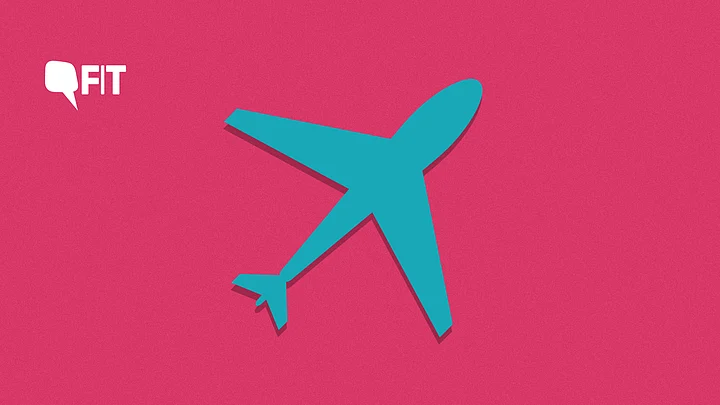It's that time of the year again!
We're all making plans for Christmas and New Year's, and for many of us, those plans would involve travel. But while being in a different place sounds refreshing and exciting, the journey to reach that location might be a pain, especially if it involves a 12-hour long flight!
But it doesn’t have to be that way. There are simple tips that can help you take care of yourself and save you from a lot of health issues. Read on.
Get Moving!
Sitting for long hours straight, without any movement, can in fact be life-threatening. Dr Arvind Das, senior director, cardiology at Max Hospital, explains two possibilities that immobility may lead to: common fainting (medically known as vasovogal syncope), and Deep Vein Thrombosis (DVT).
Fainting: Your heart is a pump from where blood travels across the body. But the only way for it to travel up from the lower body is from the calf muscles, which help push it back to the heart. When there is no movement for a prolonged time, the blood is not getting pumped back, and your head is being denied its share. This could end up leaving you unconscious. But this, Dr Arvind explains, is something that you can sense half a minute before you actually faint. In that case, you can ask someone to help you lie flat on the ground and raise your leg. This position could help push blood to your head and get you back to normal in two minutes.
DVT: A similar process is at work here as well. While fainting spells usually happen to people who are prone to it, DVT can happen to anyone. If you don’t move your calves at regular intervals, the veins in your leg could get clogged. This leads to swelling (that could last for days) and pain. In more complicated cases, the clot can travel to the lungs and cause ‘pulmonary embolism’, a life-threatening condition.
But there are simple solutions to these scary conditions, and the first one, Dr Arvind says, is movement! Move your legs so that the blood is in motion. Either take a walk or just squeeze and move your calves sitting on your seat. For the elderly and the more vulnerable, even compression stalkings could be a good option.
Hydration, Hydration, Hydration!
The low humidity in airplane cabins because of the high altitude, as well as the overall lower levels of oxygen, often result in dehydration. A dry body is more prone to infections, illnesses, and discomfort. The risk of DVT and fainting also increase manifold due to insufficient water intake.
Again, the solution is pretty simple. Drink enough water, carry a water bottle or ask your flight attendant to get you some. Keep a moisturizer handy for your skin, eye drops for your eyes, nasal spray for your nose, and a lip balm for your dry lips!
Flu and Infections
What does it mean when the person sitting next to you sneezes constantly?
The enclosed space, low humidity, and relatively lesser oxygen levels mean you become more vulnerable to catch flu and infections. Although there is sufficient recirculation of air in the plane, sitting next to someone for so many hours can make it difficult to give you complete immunity.
This can be taken care of by using sanitizers, disinfectants, and even wearing face-masks if required. Planes are usually clean and disinfected, but it’s always better to take precautions. It doesn’t harm to take a medicine or flu shot either. Do carry your basic medication.
Go Easy with the Food!
In conversation with FIT, nutritionist Rupali Datta lays down some do’s and don’ts for flight-eating. In order to avoid motion sickness, she advises, “Eat food that agrees with you. If you look at something and don’t feel like eating it, then don’t force yourself. Go with your gut.” Most importantly, avoid alcohol, tea and coffee, and even juices. They can aggravate motion sickness and dehydration. So if you do want some tea, limit yourself to one cup. For some people, citrus fruits and toffees may be helpful. Keeping a toffee in your mouth and sucking on it slowly, or taking sips of chilled water, can help with nausea. Ginger is another good option.She believes that what a person wants to eat before or during a flight may depend on their personal choices. Some would not want to eat anything before a flight, while for others, light eating may be a good idea. A lot of it would also depend on the timing. If it’s an odd-time flight and you’re perhaps boarding at 2 AM, it’s better to have dinner at home, following it with a meal in the flight only in the morning. But one thing is certain: Do not overeat.
Carry Your Essentials
Remember, comfort is key. Movement will only be possible if you give your body the space to breathe. Comfortable clothes will help you sleep better and avoid sickness by the end of the flight.
Your essentials should also include some important accessories. Earplugs, travel pillow, water bottle, and medicines! To avoid the popping sensation in your ears during take-off, make sure you take deep breaths and swallow constantly.
Keep all this in mind, and kick those travel woes goodbye!
Also Read: Why Do Flight Meals Taste So Bad?
(At The Quint, we question everything. Play an active role in shaping our journalism by becoming a member today.)
